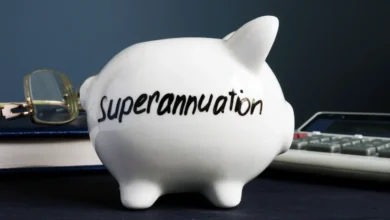Switch Super from Save to Spend
Switch Super from Save to Spend: A New Approach to Your Super
In a recent interview on ABC Radio Melbourne, investment expert Marco Melado from Sandland Private Wealth discussed the major transition Australians face when they retire: switching from saving into superannuation to spending it as a pension. This shift, known as the “drawdown” phase, is significant for retirees, and understanding the mechanics behind it can make a world of difference in how you manage your superannuation.

The Big Deal: Converting Super to a Pension
When you retire, your superannuation balance transforms from a tool for saving and growing your wealth to one for sustaining your retirement lifestyle. This process involves converting your super into a retirement pension, which mandates regular withdrawals based on your age. The government’s goal is to ensure people don’t hoard their retirement funds in a tax-free environment but instead draw on them to support their needs in retirement.
At the start, the mandatory minimum withdrawal rate is typically around 4-5% of your super balance annually, but this increases as you age. The system is designed to make sure retirees use their super for living expenses and contribute to the economy, rather than keeping large amounts of wealth hidden away.
The Flexibility of Super Pensions
While there are strict rules regarding the minimum amount you must withdraw from your superannuation each year, there is some flexibility in how you manage your funds. You can choose how to invest your super to suit your financial goals, and you can trigger the switch from accumulation to pension when you’re ready to start drawing from it.
One of the most talked-about proposals recently is from Australian Super, which suggests an automatic pension conversion at age 67. Under this proposal, super fund members would transition into the pension phase automatically, reducing the need for intervention and making the process simpler for those who may be less financially savvy.
Is the Automatic Pension Conversion a Good Idea?
While automatic conversion sounds convenient, it does come with potential drawbacks. One major concern is that financial advice would become less accessible, potentially causing retirees to miss out on the personalized planning they need at such a critical stage of life. Switching from accumulation to pension affects various aspects of your financial strategy, such as your portfolio mix, longevity of your funds, and tax consequences for beneficiaries. Financial advisers play a critical role in guiding people through these complexities, which is why many believe that a more hands-on approach, rather than an automatic switch, is a better option.

Superannuation Re-contribution Strategy
Another point raised in the interview was the superannuation re-contribution strategy, where individuals can reduce the taxable component of their superannuation by withdrawing funds and then re-contributing them. This strategy is especially valuable for those looking to minimize tax liabilities for their adult children after they pass away. By reducing the taxable portion of their super, parents can decrease the tax burden on their children when they inherit the funds.
However, this strategy comes with complexities, such as understanding the balance between taxable and tax-free components. It’s also important to note that super funds may charge fees for this strategy, which can range depending on the provider.
Understanding Super Drawdowns
One essential aspect of retirement planning is understanding how your superannuation balance will be drawn down over time. As you age, the government increases the minimum drawdown percentage to ensure that you use your superannuation rather than accumulating it indefinitely. For example, at age 77, the minimum drawdown percentage is 6%, and it increases to 9% by age 88. It’s important to plan for these changes in your financial strategy so that you can continue to live comfortably without exhausting your super too quickly.
The Reality of Australia’s Retirement System
Throughout the discussion, it became clear that Australia’s retirement system includes two major components: superannuation and the aged pension. While some retirees may have substantial super balances, others may find themselves in a situation where they need to sell assets, such as their homes, to support their retirement. This is a significant challenge, especially when considering the rising cost of living. Marco Melado emphasized that, while these issues are complex, the goal should be to seek financial advice early to ensure that you’re taking the right steps towards a secure and comfortable retirement.
Key Takeaways
- Switching from Saving to Spending: When you retire, your superannuation transitions from a savings phase to a pension phase, and it’s crucial to understand the rules and strategies involved in this shift.
- Minimum Drawdown: Once in the pension phase, the government mandates minimum yearly withdrawals based on your age, and the rate increases as you get older.
- Financial Advice is Key: Converting your super into a pension can have significant financial implications, which is why it’s essential to seek personalized financial advice.
- Re-contribution Strategy: A strategy to reduce the tax burden on your superannuation for your heirs may be worth considering if you’re thinking about your legacy.
- Start Early: The earlier you start planning for retirement, the better. Strategic planning throughout your career will lead to peace of mind when you reach retirement age.
The discussion about the switch from saving to spending your super is a critical one, and understanding the rules and strategies involved will ensure that your retirement funds support you throughout your golden years. Make sure to seek financial advice as you near retirement to maximize your super’s potential and ensure that it works for you.





